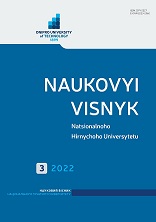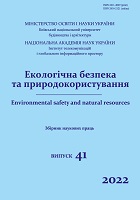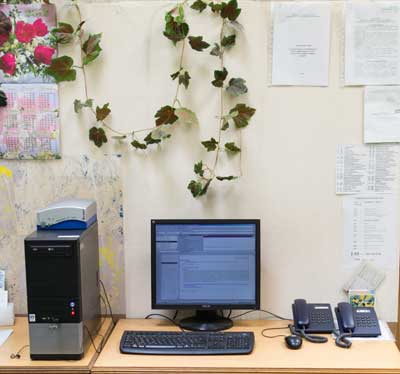
Бази даних
Наукова періодика України - результати пошуку
 |
Для швидкої роботи та реалізації всіх функціональних можливостей пошукової системи використовуйте браузер "Mozilla Firefox" |
|
|
Повнотекстовий пошук
| Знайдено в інших БД: | Реферативна база даних (4) |
Список видань за алфавітом назв: Авторський покажчик Покажчик назв публікацій  |
Пошуковий запит: (<.>A=Tsopa V$<.>) | |||
|
Загальна кількість знайдених документів : 8 Представлено документи з 1 до 8 |
|||
| 1. | 
Tsopa V. A. Elaboration of an integral system of company management by developing corporate and safety culture [Електронний ресурс] / V. A. Tsopa, S. I. Cheberiachko, O. O. Yavorska, V. V. Hilpert, A. V. Yavorskyi // Naukovyi visnyk Natsionalnoho Hirnychoho Universytetu. - 2021. - № 3. - С. 100-104. - Режим доступу: http://nbuv.gov.ua/UJRN/Nvngu_2021_3_18 Purpose. To develop a model of the integrated system for company management, basing on the integration of the quality control and labour safety systems that differs from the known ones by combination of the processes based on the increase in the level of corporate safety cultures within a company. Methodology. Formation of the basis for integration of the quality control and labour safety systems relies on the complex use of system analysis methods that, in combination with Deming and Shewhart cycle and with the performance of corresponding estimation and analysis of the organizational and safety cultures, help plan the practices, procedures, and resources for stage-by-stage combination of the systems as well as maintain the obtained results. Findings. An approach for efficient development of the integrated management system has been proposed on the basis of the analysis of levels of organizational and safety cultures; in future, this will help select such tools and practices that will allow having painless stage-by-stage combination of the available systems of quality control and labour safety with the substantiation of the necessary recourses. It has been established that a key element of the combination is readiness and motivation of not only top management but also linear management and ordinary workers to accept new technologies, approaches, and practices aimed at integration of those cultures, which is provided by the efficient staff involvement by means of corresponding training and constant communication to form the risk-oriented thinking. Originality. A structure and model of the integrated system of quality and safety management as a unified interdependent mechanism have been proposed on the basis of the combination of organizational and safety cultures; that has allowed forming the unified principles for the development of a combined management system. Practical value. The control parameters have been determined to identify stages of integration of the quality control and labour safety systems basing on the attitude to values and formed worldview as well as on the gaining the necessary competences by the workers. | ||
| 2. | 
Tsopa V. A. Improvement of the safe work system [Електронний ресурс] / V. A. Tsopa, S. I. Cheberiachko, O. O. Yavorska, O. V. Deryugin, A. A. Aleksieiev // Naukovyi visnyk Natsionalnoho Hirnychoho Universytetu. - 2022. - № 6. - С. 104-111. - Режим доступу: http://nbuv.gov.ua/UJRN/Nvngu_2022_6_18 Purpose. To improve the approach to the development of a safe work system, one of the important elements of the occupational health and safety management system (OHSMS) of employees at an enterprise. Methodology. The research is based on the "Safe Systems of Work", which combines the content of safe procedures, which are determined taking into account the content of the worker's production task when performing production activities, his/her competence in understanding the technological process and characteristics involved technological equipment. Findings. To reduce occupational diseases and industrial injuries at enterprises, it is proposed to implement the "Safe Systems of Work" (SSW) of "5 steps": "analyse", "summarize", "anticipate", "support", "improve", which will make it possible to identify occupational risks (OR) and justify the feasibility of reducing their impact on the worker during the performance of production activities. For the implementation of each step, a corresponding procedure is provided, which allows ensuring their implementation. It is proposed to carry out the OR evaluation procedure according to the "Tree Trunk Analysis" model, which is a section of the trunk of a tree divided into six parts which characterize the dangerous factors that affect the activity of the employee, the functioning of the technological equipment and the environment. A feature of the proposed approach is the establishment of zones of interaction between the following components of the proposed SSW: the worker and technological equipment, the worker and the environment, as well as the environment and technological equipment, which characterize the specified external and internal factors of influence on the SSW. Originality. The approach to the organization of SSW to reduce the level of OR during the performance of production activities has been improved based on the improvement of the OR management process, the identification of external and internal dangerous factors that affect the level of OR, the probability of the occurrence of a dangerous event and its degree of severity, taking into account changes, over time, in the conditions of performing professional activities: during stable work, during an emergency situation, during an accident and during martial law. Practical value. Improved labour protection instructions or maps of safe production processes can be applied at enterprises with the aim of better perception by employees of labour safety requirements and improvement of document flow at the workplace. | ||
| 3. | 
Tsopa V. A. Improving the process of occupational risk management according to the Haddon matrix [Електронний ресурс] / V. A. Tsopa, S. I. Cheberiachko, O. O. Yavorska, O. V. Deryugin, T. O. Bilko // Naukovyi visnyk Natsionalnoho Hirnychoho Universytetu. - 2023. - № 2. - С. 105-112. - Режим доступу: http://nbuv.gov.ua/UJRN/Nvngu_2023_2_18 Purpose. Improving the process of managing occupational risk (OR) in occupational safety and health management systems, due to the distribution of dangerous factors which increase the probability of a dangerous event into several phases: before the occurrence of a dangerous event and after its occurrence. Methodology. The method of morphological analysis is used, which is based on the selection of possible solutions for individual parts of the task based on several morphological typical features important for the problem being solved, and the compilation of all possible combinations of hazardous factors and precautionary measures that will allow reducing the amount of occupational risk. Findings. A new approach to occupational risk management is proposed, which involves the division of all dangerous factors into several phases: before the occurrence of a dangerous event, after its occurrence, provision of pre-medical assistance, provision of emergency and medical care. Typical dangerous factors are defined that increase the probability of the occurrence of a dangerous event, which relate to the first phase (before the occurrence of a dangerous event), as well as dangerous factors that affect the severity of accidents and are characteristic of the second, third and fourth phases (after the occurrence of a dangerous event). A concept was developed for calculating the magnitude of occupational risks, based on the consequences of the occurrence of a dangerous event or by the type of injury with the area of responsibility of the enterprise; from the consequences of pre-medical care or the condition of an injured person with the area of responsibility of the enterprise and with the consequences of emergency and inpatient medical care or the state of loss of health of the employee with the area of responsibility of the medical institution. The hierarchy of preventive measures has been improved due to the addition of protective measures consisting of pre-medical care, emergency medical care, in-patient medical care. Originality. When assessing professional risks, it is proposed to determine the amount in accordance with the area of responsibility of the enterprise and and medical institution taking into account dangerous factors corresponding to a specific phase. Practical value. Examples of three matrices for assessing the occupational risk have been developed, taking into account the classification of the severity of the consequences for the health of the employee, which occurred immediately after the occurrence of a dangerous event (accident), after the provision of pre-medical care and after the provision of emergency and medical care. A description of preventive actions to reduce the severity of the consequences is proposed, taking into account the sphere of responsibility. | ||
| 4. | 
Tsopa V. A. Improving a process of managing dynamic occupational risks [Електронний ресурс] / V. A. Tsopa, S. I. Cheberiachko, O. O. Yavorska, O. V. Deryugin, О. M. Borovytskyi // Naukovyi visnyk Natsionalnoho Hirnychoho Universytetu. - 2023. - № 4. - С. 110-117. - Режим доступу: http://nbuv.gov.ua/UJRN/Nvngu_2023_4_18 Purpose. To improve the process of managing dynamic occupational risks, which considers changes in time in hazardous factors of the organization's environment in the occupational safety and health management system. Methodology. To improve the process of managing occupational risks, we have applied a well-known "Bow-Tie" model (ISO 31010:2018). The model allows assessing occupational risks as the product of the probability of hazardous event occurrence and severity of the consequences, taking into account the influence of hazardous external and internal factors, hazardous actions or dangerous inactions, which, according to the requirements of Clause 4.1 of the ISO 45001:2018 standard, are interconnected and subject to the influence of time. Findings. A model of the connection of hazardous factors of the internal and external environment of an organization, related to their negative influence on the growing probability of hazardous event (incident) occurrence and a degree of severity in time, has been developed. The process of managing occupational risks is proposed, taking into account changes in the time of exposure to hazardous factors, which will allow determining the acceptability or unacceptability of the occupational risk in time. The analysis of changes in occupational risks is proposed to be considered in the following time intervals (specifically in those where there is a corresponding change in risk factors): time of the day, day of the week, month of the year, quarter, half year, year, years etc. All the proposed professional risks were divided into two groups of professional risks considering the changes in their levels in time: static and dynamic ones. To calculate the occupational risk level, it is also proposed to determine all combinations of hazardous factors that can occur simultaneously in time within the corresponding intervals of the time under analysis. Originality. It has been determined that identification of the acceptable level of an occupational risk in the maximum combination of all hazardous factors acting simultaneously at a certain point in time will lead to the fact that all other combinations of hazardous factors will also have an acceptable level of occupational risk. This provision follows from the fact that the level of occupational risk from a smaller number of hazardous factors will not exceed the indicator of occupational risk from the exposure to a larger number of hazardous factors in time. Practical value. The forms for dynamic occupational risk assessment have been developed; a matrix has been proposed for determining the number of combinations of hazardous factors acting simultaneously in time. | ||
| 5. | 
Tsopa V. Development of a new ergonomic risks management algorithm on the example of drivers [Електронний ресурс] / V. Tsopa, S. Cheberiachko, Y. Cheberiachko, O. Deryugin, O. Chencheva, D. Rieznik, E. Klimov, Y. Lashko, D. Pashko, V. Biliaieva // Eastern-European journal of enterprise technologies. - 2024. - № 2(3). - С. 38–49. - Режим доступу: http://nbuv.gov.ua/UJRN/Vejpte_2024_2(3)__6 | ||
| 6. | 
Tsopa V. A. Development of the concept for improving the management system of employee safety and health in Ukraine [Електронний ресурс] / V. A. Tsopa, O. O. Yavorska, S. I. Cheberiachko, O. V. Deryugin, M. S. Brezitska // Naukovyi visnyk Natsionalnoho Hirnychoho Universytetu. - 2024. - № 3. - С. 87-94. - Режим доступу: http://nbuv.gov.ua/UJRN/Nvngu_2024_3_14 | ||
| 7. | 
Tsopa V. A. The relationship between the development of a safety culture and the implementation of safety requirements in organizations [Електронний ресурс] / V. A. Tsopa, S. I. Cheberiachko, O. O. Yavorska, O. V. Deryugin, A. A. Aleksieiev // Naukovyi visnyk Natsionalnoho Hirnychoho Universytetu. - 2024. - № 6. - С. 101-108. | ||
| 8. | 
Tsopa V. The process of dangerous event management taking into account economic, environmental and occupational losses [Електронний ресурс] / V. Tsopa, O. Yavorska, O. Borysovska, L. Cheberyachko, T. Nehrii // Екологічна безпека та природокористування. - 2024. - Вип. 3. - С. 72-87. - Режим доступу: http://nbuv.gov.ua/UJRN/ebpk_2024_3_9 | ||
 |
| Відділ наукової організації електронних інформаційних ресурсів |
 Пам`ятка користувача Пам`ятка користувача |